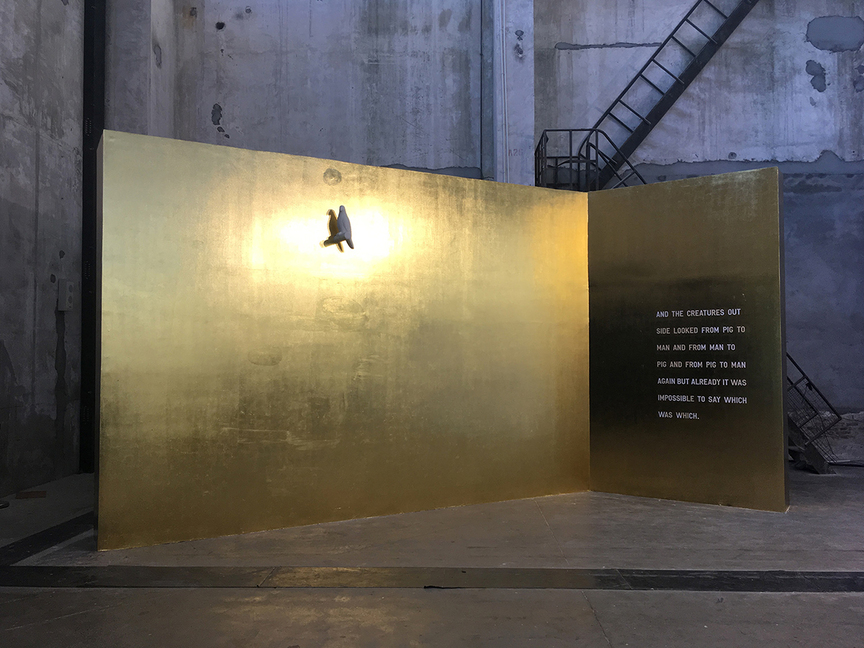
R
E
V N
E
X
T
Boers-Li Gallery (Beijing/New York) brought a 12-channel video installation by ZHANG PEILI, titled Uncertain Pleasure (III) (1996). On each of the TVs is a close-up of an anonymous someone incessantly scratching at a body part, including armpits, backs of hands and wrists. All photos by Chloe Chu for ArtAsiaPacific.
The fourth West Bund Art and Design fair opened on November 10 in a cavernous, converted aircraft factory in the burgeoning art district west of Shanghai’s Huangpu River. The event was a major anchor in the city’s annual art week, which saw a flurry of exhibition openings at nearby institutions including Yuz Museum, Pond Society, Shanghai Center of Photography and Qiao Space, bringing together diverse groups of guests from across the world. While galleries slowly gathered sales momentum on the first day, many exhibitors were still holding their breaths at the evening’s close, planning for a long game in an exciting but unstable corner of the Chinese market.
Notably missing from the fair were nudes and Korean artists. South Korean art, music and TV shows are being blocked following political tensions between Seoul and Beijing this year. Meanwhile, West Bund’s roster of galleries has morphed over the fair’s iterations, with various alternative fairs vying for the same exhibitors. First-time participants in 2017 included Hanart TZ (Hong Kong) and Lisson Gallery (New York/London), which sat front and center at the entrance, next to returnee Ota Fine Arts (Tokyo/Singapore/Shanghai). West Bund has nevertheless kept to the same model of an intimate size, with 70 participating galleries across three sectors and a focus on blue-chip art displayed in generously sized booths, which made for the opportunity to show and see some thought-provoking projects. Here are some highlights.
Chloe Chu is the associate editor of ArtAsiaPacific.
West Bund Art and Design runs in Shanghai’s West Bund Cultural District until November 12, 2017.
To read more of ArtAsiaPacific’s articles, visit our Digital Library.




